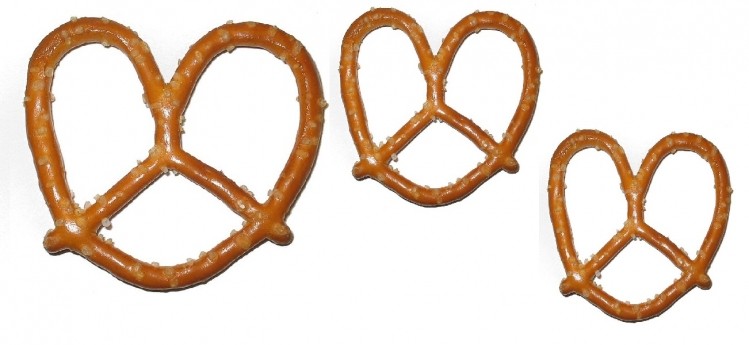Overweight people eat fewer pretzels…in single-serve packs

The study written by Chrystal Haire and Hollie Raynor from the University of Tennessee was published in the April issue of the Journal of the Academy of Nutrition and Dietetics.
64 participants were given 20oz (567g) of pretzels to eat as and when they liked over four days.
Some were given 22 single serve package (SSP) salted mini pretzels (0.9oz in each portion) and others two 10oz standard packages, all in the (non-disclosed) food manufacturer’s original packaging.
Big packs are more visible
At the end of the four days the participants brought back all the packages and the weight of pretzels consumed was determined.
“Results from our study suggest that package size influenced consumption in overweight/obese participants, because this group ate significantly fewer grams of pretzels in the SSP compared with the group in the STP [standard packaging] condition,” Haire and Raynor wrote.
“Package size may have served as an external cue in this study by prompting more eating bouts, or by suggesting a normative amount of food to consume when eating,”they added.
Participants recorded when they had eaten pretzels. The study suggests larger packages are more visible and so prompt more frequent consumption.
The study’s criteria covered people aged between 18 and 35. Normal weight was defined as a body mass index of 18.5-24.9 and overweight/obese was classed as 25 – 39.9.
No effect of package size on food intake was observed for normal-weight participants.
What about chips, candy and cookies?
Single-serve packages have been marketed as a tool to help reduce food intake, and gained popularity with consumers in recent years.
However, there has been limited research into packaging size and food intake, co-author Hollie Raynor (director of Public Health Nutrition, University of Tennessee), told FoodProductionDaily.com.
She said studies have offered “largely inconsistent” results, and added that her research looked at the relationship between package size and food intake in a natural eating environment.
“We clearly examined outcomes by weight status, rather than having one group of a mixture of weights,” Raynor said.
“We also only manipulated package size and no other characteristics, which helps draw conclusions about the effects of package size.”
However, the authors said they did not collect information about participants that has been shown to influence intake.
These include socio-economic status, mental health and eating disorders, and eating behaviour tendencies.
Haire and Raynor said that further research should look at what characteristics might affect the relationship between package size and food intake.
It should also examine packaging sizes for other snack foods such as chips, candy and cookies.
Source: Journal of the Academy of Nutrition and Dietetics
February 21 2014
‘Weight Status Moderates the Relationship between Package Size and Food Intake’
Chrystal Haire, Hollie Raynor.















